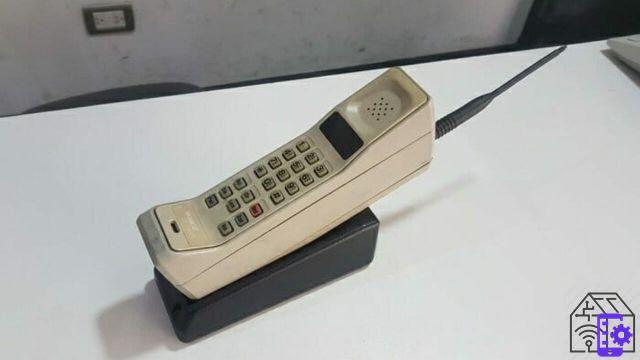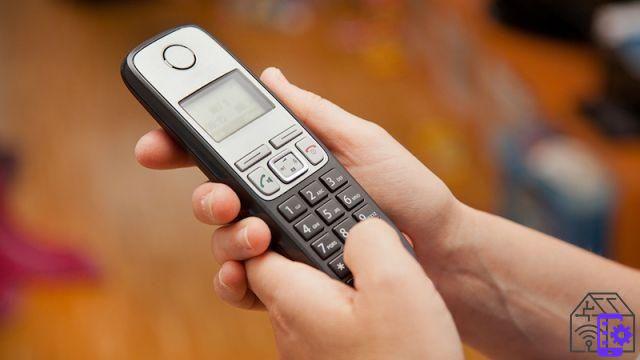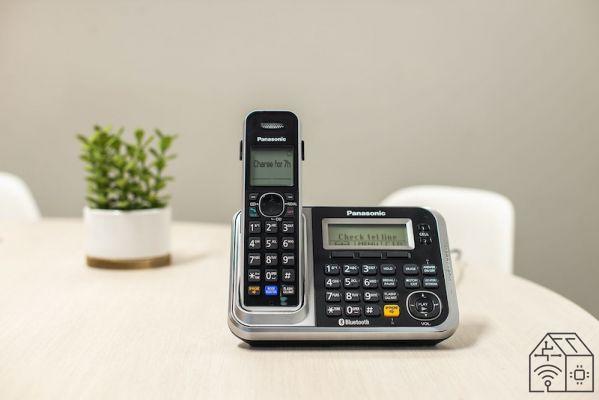
What is the cordless telephone, how has it changed and what future awaits it? Discovering an instrument whose parable testifies to the extraordinary pace of technological discoveries.
Yes: because the cordless telephone, which until a few years ago seemed such a convenient and essential novelty, now hardly interests anyone anymore.
What is cordless and how does it work
It would be called a cordless phone, but everyone just calls it cordless, giving the adjective the meaning of noun. And in fact the meaning of the instrument is all in that cordless, which in Italian means without string, without wire. And it indicates the technology on which cordless phones are based. That is, cordless telephones mainly intended for home use.
Cordless phones use radio communication thanks to a small radio base station placed in the house, connected to the fixed telephone line via twisted pair and telephone socket, and electrically powered.

How cordless has changed: its origins
It seems that the inventor of the cordless phone was a jazz musician. His name was Terry Pall and in 1965 he first invented the cordless telephone. However, it was not possible to commercialize his device, because the cordless version of Pall had a signal width of 2 miles (about 3,2 kilometers), which interfered with aircraft communications.
However, the father of the cordless phone is considered by many to be George Sweigert, a radio amateur who served in the United States Army as a radio operator in World War II. Sweigert filed his patent application on May 2, 1966, to receive a positive response on June 10, 1969.
Refinement and market launch
It then fell to Douglas G. Talley and L. Duane Gregory, in 1974, to patent a cordless model more similar to the recent ones, equipped with battery and control signals. The device has gradually improved, and since the early XNUMXs large companies have begun to show a strong interest in cordless telephones.
How cordless has changed: a first evolution
The first models of cordless phones were AM, operated on a frequency of 1.7 MHz and were susceptible to various interference.
Here then, starting from the early nineties, the entry of models that used frequency modulation (FM). Working on a wide frequency range, from 43 to 50 MHz, in addition to using less energy, they guaranteed less interference.
However, analog cordless phones did not give excessive guarantees regarding privacy: if the conversations of the AM models could be intercepted with a simple radio, those of the FM devices could be received by radio scanners.
The digital turning point
Between 1994 and 1995 the DDS were launched on the market (Digital Spread Spectrum, or the broad “digital frequency spectrum” of these phones), and the era of digital cordless phones begins.
Their signal is spread over a wide range of frequencies, which ensures greater resistance to signal fading. Furthermore, this technology makes it almost impossible to intercept the wireless conversation.
The latest models of cordless phones adopt the DECT standard (Digital Enhanced Cordless Telecommunication) and in Europe they use frequencies from 1880 MHz to 1900 MHz.

How cordless has changed in recent years
Today on the market we find not only traditional cordless but also VOIP devices, which take advantage of the Internet connection at home.
Among the new technologies it is necessary to mention ECO DECT, which minimizes the propagation of radio and electromagnetic waves, and the ECO PLUS, which has a range of up to three hundred meters outdoors, and when it is in stand-by it does not emit radio waves.
Then there are appliances that, thanks to the Bluetooth technology, allow the use of earphones. And i cordless GSM, which work with a SIM card inside.
I latest generation cordless phones they can have high-definition color displays, are able to send messages, allow you to read emails and receive the latest information via RSS feed, select Internet Radio or podcasts and play them through the built-in speaker.
 Cordless Telecommunications in Europe: The Evolution of...
93,08 EUR
Acquista su Amazon
Cordless Telecommunications in Europe: The Evolution of...
93,08 EUR
Acquista su Amazon
The cordless phone in the time of smartphones
These very recent additional features show how the cordless is making a run-up, perhaps out of time, towards the imitation of the smartphone.
The feeling is that it is really too late. Today every citizen has (at least) their own device, almost always with an all-inclusive rate that makes the domestic line superfluous. Furthermore, voice conversations will increasingly be conveyed by data traffic. Most of those who keep the fixed line active, do so to be able to surf the Internet.
Let's take an eloquent fact. The AGSCOM observatory relating to the use of the fixed network in the last quarter of 2019 tells us of a significant decrease in accesses (-180.000 compared to the previous quarter, -700.000 compared to 2018).
Cordless phones therefore do not seem to have a bright future, especially in homes. Perhaps they will be able to resist in companies, even if by now every employee is used to providing customers with a mobile phone number, whether it is a private one or one provided by the company.
Aficionados of cordless phones must cheer on receptionists and secretaries: as long as they are there, the cordless phone will probably not disappear.




















![[Review] Samsung Powerbot VR7000: the robot vacuum cleaner from Star Wars](/images/posts/6bc44de38605b5c0fa12661febb1f8af-0.jpg)





